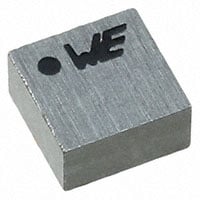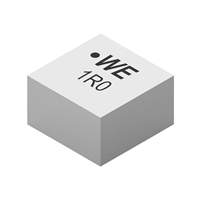WE-MAIA Series, Fixed Inductors
Results:
126
Manufacturer
Series
DC Resistance (DCR)
Current - Saturation (Isat)
Current Rating (Amps)
Frequency - Self Resonant
Inductance
Supplier Device Package
Height - Seated (Max)
Size / Dimension
Type
Package / Case
Operating Temperature
Tolerance
Inductance Frequency - Test
Q @ Freq
Shielding
Mounting Type
Ratings
Features
Material - Core
Results remaining:126
Applied Filters:
WE-MAIA
About Fixed Inductors
Inductors, also known as coils, chokes, or reactors, are fundamental passive electrical components with two terminals that store energy in a magnetic field when an electric current flows through them. When the current changes, the magnetic field induces a voltage in the conductor. The induced voltage has a polarity that opposes the change in current that generated it, creating a self-inductance effect.
The unit of measurement for inductance is the Henry (H), named after the American physicist Joseph Henry. Inductors are present in various forms and sizes, ranging from microhenries (μH) to millihenries (mH) and even higher.
In practical applications, inductors can be used to filter out unwanted high-frequency signals and to store and release energy in DC-DC converters. Inductors can also be used in conjunction with capacitors to create resonant circuits for filtering specific frequencies.
Inductors come in different mounting options, including surface mount technology (SMT), through-hole, and chassis mounting. Surface mount inductors are ideal for compact designs, while through-hole inductors provide robustness and ease of assembly. Chassis-mounted inductors offer a more rugged design for industrial and heavy-duty applications.
In summary, inductors are essential components in electronic circuits, providing energy storage, signal filtering, and frequency selection capabilities. With a wide range of mounting options and applications, these fundamental passive components play a vital role in modern electronics.

1.2mm_tmb.jpg)



1.5mm_tmb.jpg)